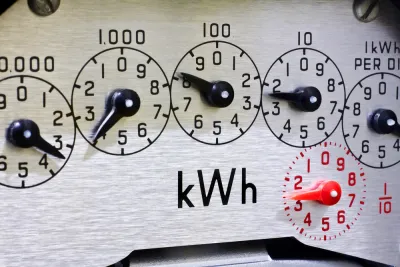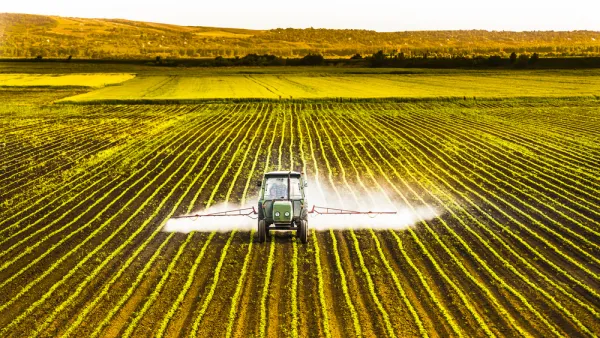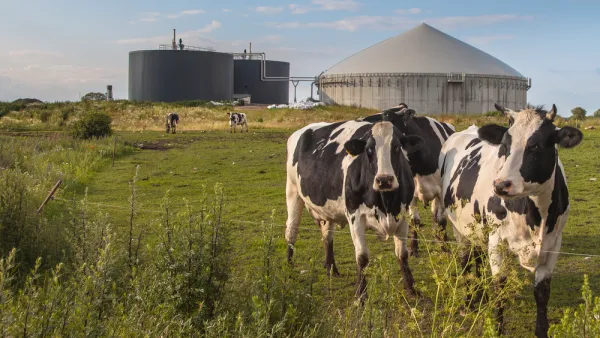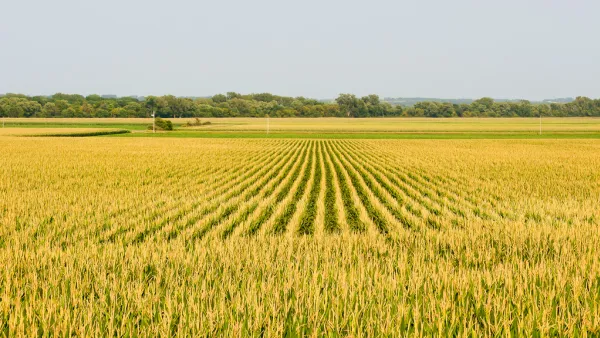There are many environmental benefits to bioenergy, particularly when the feedstock comes from waste, as opposed to agricultural products that could be used for food. A new study applies life cycle analysis to four types of waste matter.

"A new study from the University of California, Los Angeles (UCLA) identifies the potential power of all manner of waste, with its ability to be a renewable resource of power that simultaneously cuts carbon emissions," reports Chris Galford of Daily Energy Insider.
While it is not the first time waste has been looked to as a potential source of bioenergy, the study goes more in depth into how the practice could benefit the nation on a larger scale.
The researchers, UCLA industrial ecologist and energy economist Deepak Rajagopal and urban planning doctoral candidate Bo Liu, promote using waste sources as an alternative to agricultural crops that supply most of the feedstock for biofuels such as ethanol, 95 percent of which is derived from corn in the U.S.
"But crop-based ethanol creates other problems — including increased food prices and environmental damage from expanding agriculture, such as habitat destruction, fertilizer runoff and water use," writes Allison Bell of UCLA's Institute of the Environment and Sustainability, which is why using waste products is inherently more sustainable.
“The benefit of using waste is that we are generating waste anyway. It is a leftover resource that we have not conventionally thought about,” Liu said.
The latest Intergovernmental Panel on Climate Change (IPCC) report, released earlier this month, was critical of raising crops for energy production, warning it could contribute to desertification as marginal lands would be needed for food production as the climate warms.
However, not all waste biofuels are created equal. Benefits vary depending on what kind of waste is used, how it gets processed, what the end products are and where they’re produced.
Rajagopal and Liu examined this variability by conducting life cycle analyses, or examinations of products from creation to end of life, of four types of waste: agricultural, forestry, landfill and cow manure.
Aviation target
One of the better applications of bioenergy are biofuels because unlike electricity generation, "large-scale transportation sectors will still need burnable fuels for the foreseeable future," adds Bell. But "diversity is key," according to Rajagopal. "Biofuels should not be limited to any one application, with potential transportation applications ranging from cars and trucks to planes and ships."
Airlines have already begun to explore biofuel alternatives. In 2016, United Airlines and jet fuel company AltAir spearheaded commercial deployment of waste biofuels for aviation, using a mix of alternative jet [aka biojet fuel] and conventional fuels
“In all these applications electric vehicle technology is still not there. Electric batteries are still not there,” Rajagopal said. “So we still need alternatives to oil. I think there is a role there for biofuels if you do it right.”
An Aug. 14 article in The Conversation observes that "[a]viation emissions have risen by 70% since 2005 and as demand increases in rich and poorer countries, they’re forecast to increase by between 300% and 700% by 2050," yet fails to mention the role biofuels could play, though the authors do discuss electric power and hydrogen and even helium fuels.
The UCLAstudy was published last month in the journal Nature Energy.
Related in Planetizen:
-
JetBlue to Reduce Carbon Footprint with Large Purchase of Renewable Jet Fuel, September 23, 2016
-
Biofuels Make Headways into Jet Fuel Market, July 22, 2015
Hat tip to David McCoard.
FULL STORY: UCLA study shows converting waste to biofuels could be untapped resource

Analysis: Cybertruck Fatality Rate Far Exceeds That of Ford Pinto
The Tesla Cybertruck was recalled seven times last year.

National Parks Layoffs Will Cause Communities to Lose Billions
Thousands of essential park workers were laid off this week, just before the busy spring break season.

Retro-silient?: America’s First “Eco-burb,” The Woodlands Turns 50
A master-planned community north of Houston offers lessons on green infrastructure and resilient design, but falls short of its founder’s lofty affordability and walkability goals.

Test News Post 1
This is a summary

Analysis: Cybertruck Fatality Rate Far Exceeds That of Ford Pinto
The Tesla Cybertruck was recalled seven times last year.

Test News Headline 46
Test for the image on the front page.
Urban Design for Planners 1: Software Tools
This six-course series explores essential urban design concepts using open source software and equips planners with the tools they need to participate fully in the urban design process.
Planning for Universal Design
Learn the tools for implementing Universal Design in planning regulations.
EMC Planning Group, Inc.
Planetizen
Planetizen
Mpact (formerly Rail~Volution)
Great Falls Development Authority, Inc.
HUDs Office of Policy Development and Research
NYU Wagner Graduate School of Public Service




























